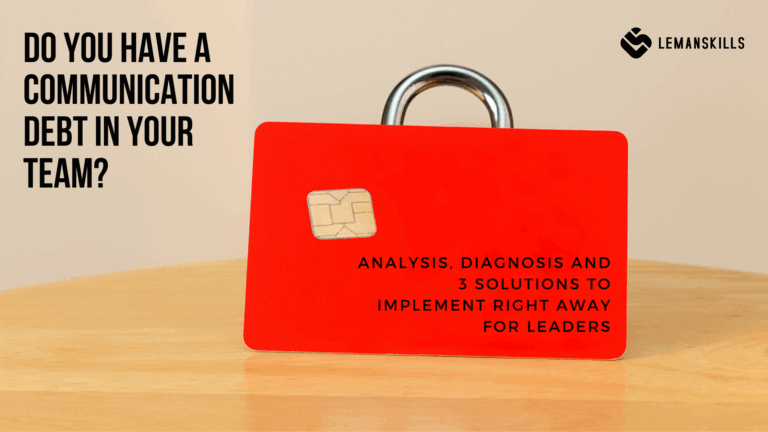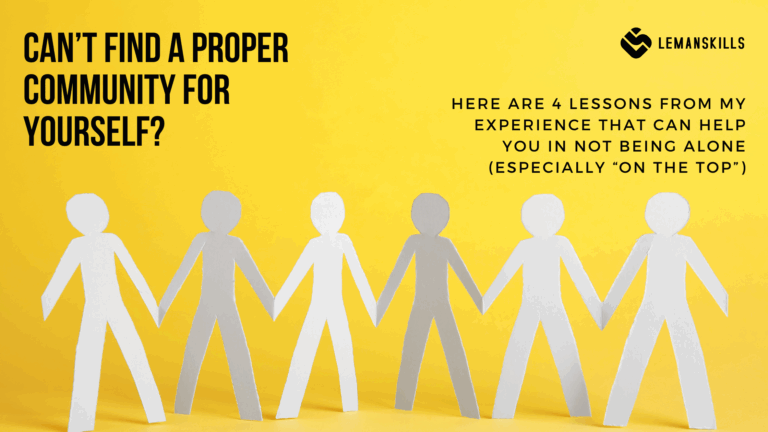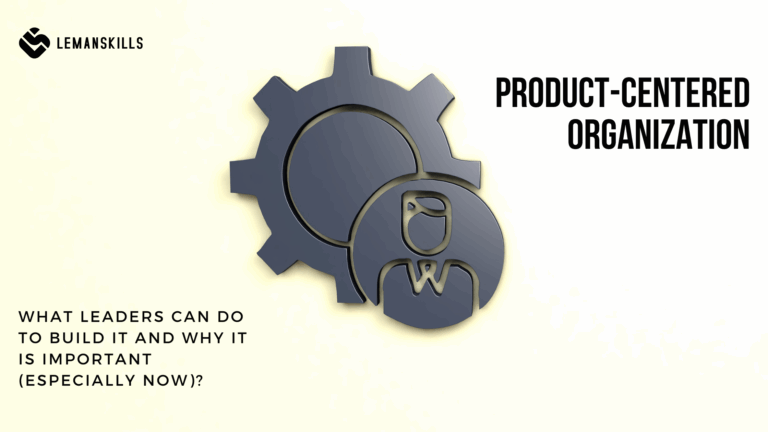In today’s fast-paced world, the importance of continuous learning cannot be overstated, especially for leaders. However, many leaders find themselves ceasing to learn over time, which can have huge (and negative) effects on their organization, team and their personal growth. Understanding why leaders quit learning and finding solutions to these challenges is crucial for sustained success. Here are five essential reasons why leaders stop learning and how they can overcome these obstacles.
1. Success is already achieved, right?
Many leaders become satisfied after achieving a certain level of success. They feel that their current knowledge and skills are sufficient to maintain their position and continue leading effectively. This state can lead to stagnation and a lack of innovation: can be a fog that stop us from seeing things clearly. Sometimes it’s also connected with: “I’ve learned something 2/5/10 years ago and it worked. Why should I bother learning something new?!”. Sure thing, we can use the knowledge and experiences from the past. But we also know that the world changes all the time. And the speed of those changes is extremely high.
Solution? Leaders should cultivate a mindset of lifelong learning. Embracing the idea that there is always more to learn can keep them motivated. One practical approach is setting personal learning goals each year, quarter, month (or even a day), such as reading / listening to a certain number of books, attending workshops, or enrolling in online courses. For instance, Bill Gates is known for his habit of reading 50 books a year, which keeps him informed and inspired.
2. Overwhelmed by Responsibilities
Leaders often juggle multiple responsibilities, leaving them with little time or energy to focus on learning. The demands of their roles can make it challenging to prioritize personal and professional development. AKA: “I don’t have time or energy”. This sentence barely goes through my throat since for me, there’s no such thing as lack of time. It’s only a lack of priority.
Solution? Task and energy management is a key. Leaders should schedule dedicated time for learning activities, just as they would for any other important meeting. This might include setting aside an hour each day for reading or listening to educational podcasts during commutes. Additionally, delegating tasks and empowering team members can free up time for leaders to focus on their growth. The key is to get the time back, not to use constantly the old excuse. Einstein said that the definition of insanity is doing the same thing over and over again and expecting a different result. I couldn’t agree more.
3. Fear of Vulnerability
Admitting a lack of knowledge or skill can make leaders feel vulnerable, especially if they believe it might undermine their authority. This fear can prevent them from seeking new learning opportunities. Also, it’s necessary to step into the uncomfortable while learning. It might mean making mistakes, that… other people can see! (OMG, that’s the end of the world!). We have so many limiting beliefs in our brains and this on should be on the top of our lists to exchange with a new one immediately.
Solution? Embracing vulnerability as a strength rather than a weakness is essential. Leaders can create a culture of learning within their organizations by openly sharing their own learning journeys and encouraging others to do the same. For example, Satya Nadella, CEO of Microsoft, promotes a “learn-it-all” culture rather than a “know-it-all” approach, which has been instrumental in transforming the company.
4. Lack of Feedback
Without regular feedback, leaders may not be aware of areas where they need improvement. This lack of insight can lead to a false sense of competence, discouraging further learning. And there are so many new skills (technical / SME-oriented, and social / leadership) that sometimes we simply don’t know what to choose. It’s not surprising! And when we don’t know where to focus, we often choosing not doing anything at all.
Solution? Seeking feedback from supervisors, peers, mentors, and team members can provide valuable insights into areas for growth. Leaders should actively solicit constructive feedback and use it as a foundation for their learning plans. Implementing a regular asking mode, even if it’s just sending a short e-mail to 10 people once per quarter with the note: “Hi! I just wanted to ask you for 2 things. What I do well when we work together? What can I do better?” This way we actively seek information with examples from people that can really answer those questions. Easy, simple and doable: how does it sound as a quick implementation idea?
5. Rapid Technological Changes
The rapid pace of technological advancements can be intimidating, especially for leaders who are not tech-savvy. The fear of not keeping up with the latest trends can discourage them from trying to learn about new technologies. 2 weeks ago, I’ve started a new growth path in one of the companies I work with. I included some AI tools to show them how they can use the tech tools so they get their time back that they spend right now on repetitive, easy tasks, so they can invest it somewhere else.
A bunch of people at the end of the workshop said: “You know what, Alex? It’s all great, extremely useful. But after this workshop I see how big of a gap I must fill out.”. It wasn’t my intention at all! I gave them 3-4 tools + one platform that they can use as a browser if they want to cover a specific need. And that was all! But the feeling or a though in themselves was so strong that we needed to spend a while on addressing that properly.
Solution? Leaders should focus on building digital literacy by starting with the basics and gradually advancing their skills. Enrolling in beginner-friendly courses or workshops can help demystify technology. Additionally, partnering with tech-savvy team members or hiring digital consultants can provide guidance and support. The most important thing? Start small. You don’t need to be an expert in everything. Choose wisely, focus, get results.
The journey of learning is full of challenges for leaders, but it is also filled with opportunities for growth and innovation. By addressing these common barriers and implementing practical solutions, we can build a real passion for learning and lead our organizations with renewed vigor and vision. Remember, the most successful leaders are those who never stop learning. So, what are you going to learn today?
You want more content like that, and you prefer to listen? Check out the Leman Tech Leadership Podcast!




